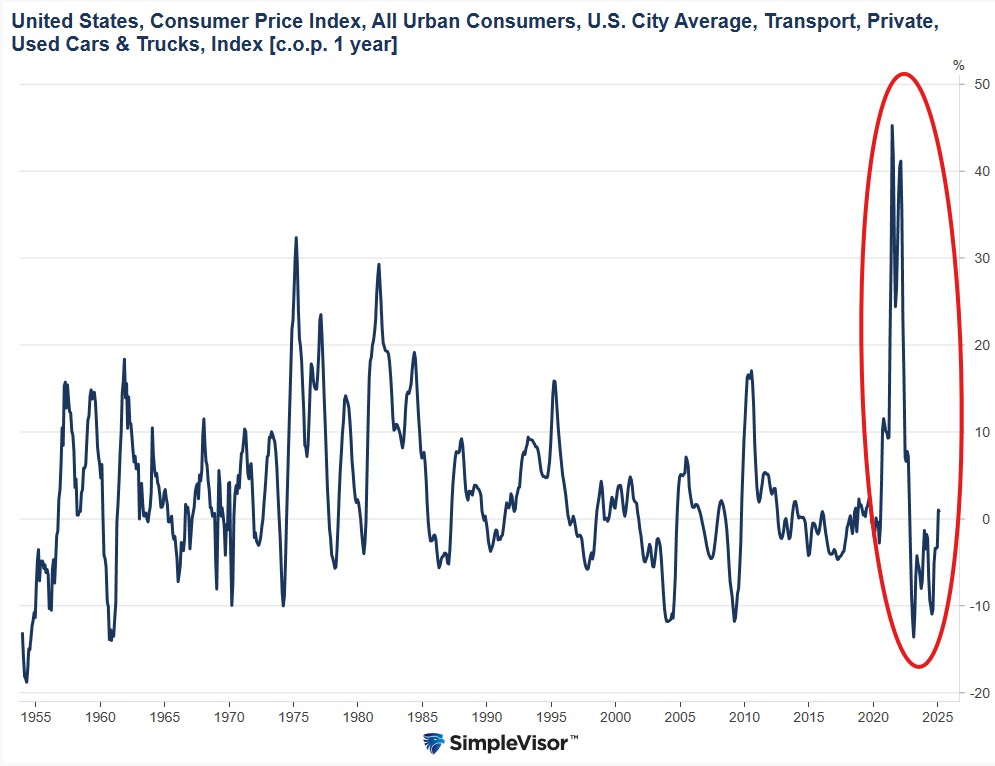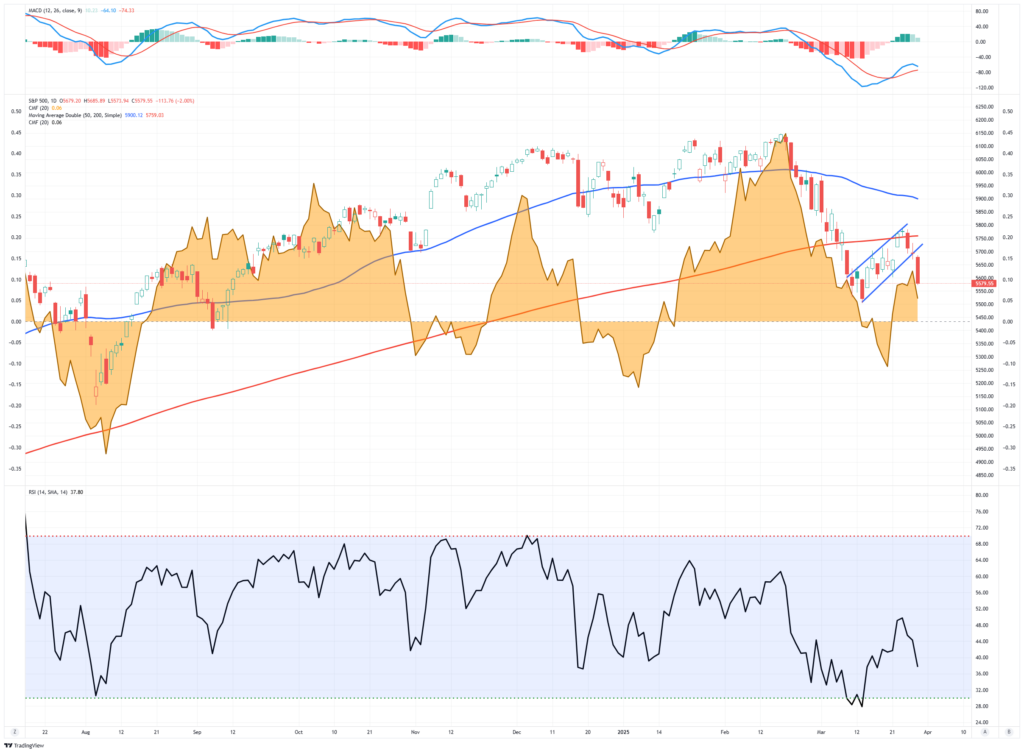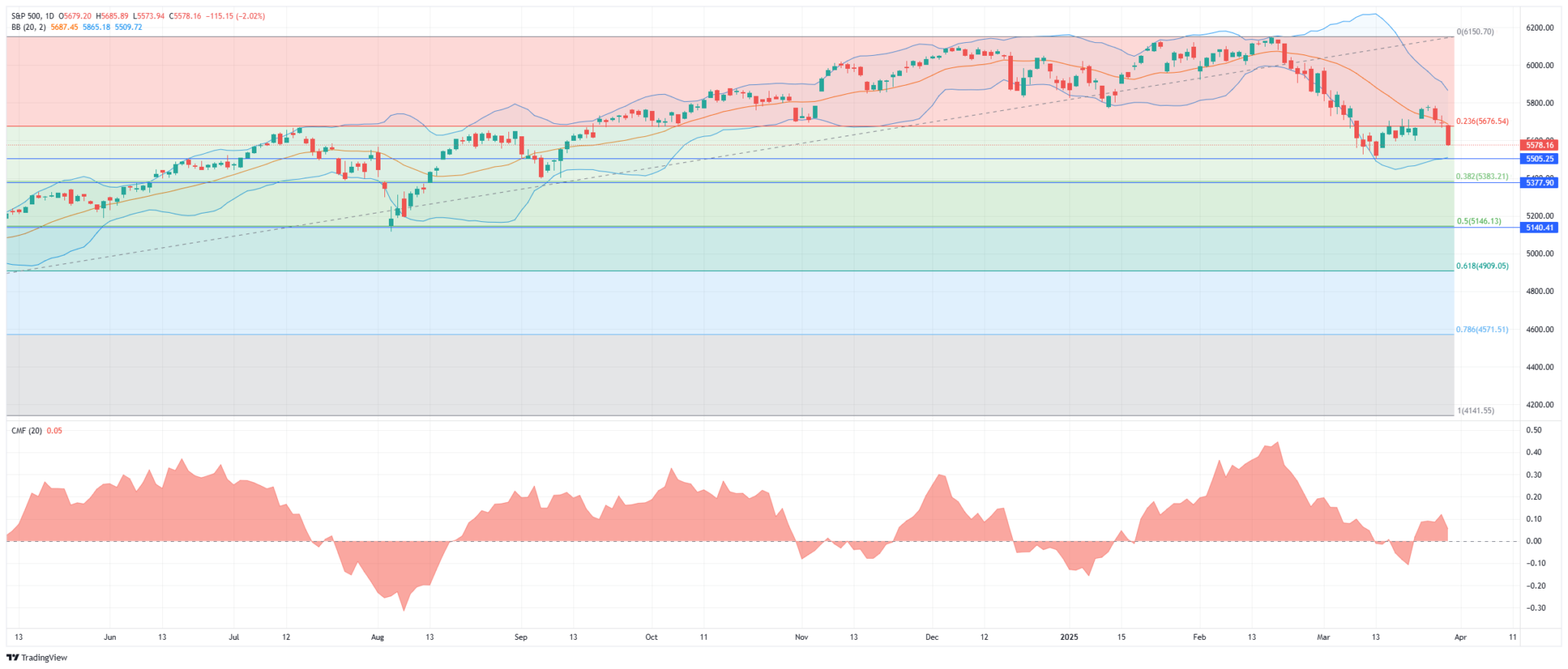It wasn’t that long ago that used car prices were soaring as the production of new cars was crimped due to Covid-related supply line shortages. Since then, used car prices have stabilized as the supply lines have healed. However, like many goods, prices haven’t retreated to pre-pandemic levels.
The new 25% tariff on cars assembled outside the US could raise new car prices. JP Morgan thinks the impact could be 10% or more if the tariffs are fully passed on to consumers. Thus, those consumers unable or unwilling to pay a higher price may resort to purchasing a used car. Economists call this the substitution effect.
The market seems to think the tariffs will benefit used car suppliers. Per Bloomberg:
As of midday Thursday, shares of used-vehicle dealers CarMax Inc. and Carvana Co. were each modestly higher, while rental-car company Hertz Global Holdings Inc. soared as much as 27% to its best intraday gain in more than three years. GM, Ford, and Stellantis all fell.
While the supply lines are back to normal, the used car market is still short on supply. If demand for lower-end new models declines, as many of them are made outside of the US, used cars will likely be more in demand. Thus, their prices are likely to rise. Given the on-again, and off-again nature of tariff announcements and actions, the net impact on new and used auto prices is unclear at this time.
Market Trading Update
“While Trump’s tariffs and bearish headlines currently dominate investors’ psychology, we must remember that corrections are a normal market function. Yes, the market is down roughly 9% from the peak, but we have seen these corrections repeatedly in the past.
That does NOT mean a more extensive corrective process is not potentially in process. It only implies that markets are likely in a position for a technical rally to reverse the more extreme oversold conditions. As shown, the MACD and relative strength are currently at levels not seen since the October 2022 lows. Furthermore, the market has completed a 23.6% retracement of the rally from those lows, providing the support needed for a rally.”
The market tried to muster a rally this week, and we are beginning to see early signs of a bottom forming. However, on Friday, the impact of tariffs and a slighter, hotter-than-expected PCE print sent markets tumbling. The good news is that the market remains on a buy signal, with an improvement in both money flows and relative strength. However, those improvements may be fleeting, with the market failing its first resistance test at the 200-DMA and decisively breaking below the recent uptrend.

While it would not be uncommon for the market to retest recent lows, we are becoming more concerned about a more protracted consolidative or corrective process. The following chart lays out the most probable retracement levels if such occurs. Using the October 2022 lows as the starting point for the bull market rally, the market recently completed a 23.6% retracement of that rally. A continuation of the correction will find support at the following levels:
- The recent lows are around 5500.
- Immediately blow that is the 38.2% retracement level at 5383
- Lastly, the 50% retracement level at 5146 should hold, barring the onset of a fiscal event or recession.

As noted last week, nothing in the market is guaranteed. Therefore, we must continue managing risk accordingly until the market’s direction is revealed. When that will be, we are uncertain, so we continue to watch the technicals, make small moves within portfolios, and reduce volatility risk as needed.
Regardless of where the current corrective or consolidation process ends, sellable rallies will exist so that investors can take action. This is the topic of this week’s newsletter.
The Week Ahead
PCE prices were a tenth of a percent higher than expected despite the better-than-expected CPI and PPI reports earlier this month. The bond market seems more focused on inflation expectations, particularly how tariffs may impact prices.
Employment data will be in the spotlight this week, starting with JOLTs on Tuesday. On Wednesday and Friday, respectively, the ADP and BLS Employment Reports will release their inflation reports. The ISM manufacturing and service reports will inform us of business owners’ sentiments. We suspect these could be volatile due to tariff uncertainty.
